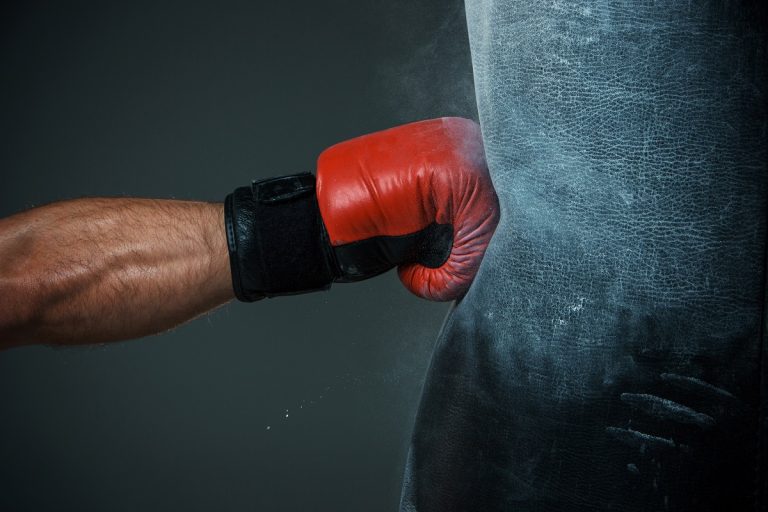Do Boxers Lift Weight? (Is It a Beneficial and Standard Practice?)
Weightlifting is a routine training process in various sports requiring strength. In boxing, several professional boxers lift weights as part of their typical exercise, while some choose to eschew it. This penchant makes aspiring boxers wonder if the major boxing organizations recommend weightlifting as a standard training practice for boxers. Another concern is if the process holds any benefit or is just a pastime for professional boxers.
This guide reveals the weightlifting culture in boxing, why boxers lift or abstain from weights, and its possible benefits and drawbacks. After the read, you’ll realize if weightlifting is vital to your boxing pursuit or not.
Do Boxers Lift Weight?

Yes, boxers indeed do lift weights. However, professional boxers and individuals in the boxing circle have contrasting views about weightlifting.
The weightlifting culture in boxing significantly differs from that of a traditional bodybuilder. Boxers don’t lift as much volume of weights as bodybuilders and powerlifters. Instead, they focus on the intensity coming from the speed or load of the exercise.
Common Weight Training Exercises Employed by Boxers
There are various weight training practices available for professional fighters.
Some of the most popular methods are:
Deadlifts
Deadlifts are one of the most common weightlifting exercises for pro boxers. Many fighters use deadlifts to build their posterior chain muscles for faster punches. Meanwhile, some boxers believe it helps them develop balance and stability.
Crunches
Crunches are also a popular choice for weight-training prizefighters. Some boxers suppose the practice is effective for rotating the trunk and developing the core muscles.
Squats

Several boxers engage in squats to build their leg muscles. These individuals equate larger leg muscle mass with more strength and power. Similarly, they conclude it’ll be easier to throw punches, block, and drive around the ring if they perform squats.
Shoulder Shrugs
Shoulder-focused exercises are quite common among professional fighters. Many boxers believe shoulder shrugs activate the trapezius muscles for harder punches and prevent suffering injuries on the shoulders.
Bicep Curls
Bicep curls are exercises for the upper arm muscles — biceps and triceps. The workout aims to maintain upper body strength to render strong punches to opponents in the ring.
View of the Major Boxing Organizations on Boxers Lifting Weight
Historically, the boxing tradition was that additional gain of muscle mass slowed down boxers and thus discouraged anything that could increase the boxers’ muscle mass. This perspective loosened in contemporary times, as low-volume weightlifting became associated with various benefits for boxers, especially heavyweights. Still, there’s no generalized view about weightlifting in boxing, and the choice ultimately boils down to the individual boxer and their coach.
Why Do Some Boxers Lift Weights?
The boxers who lift weights intend to improve their power output and punching ability. Heavyweight boxers constantly need strength, explosive power, and speed and expect to get these qualities from weightlifting. So, it’s fairly common to see heavyweights training with weights compared to other weight divisions of boxing.
Similarly, some boxers believe weightlifting helps generate robustness to injury. Prominent boxers fond of lifting weights include Anthony Joshua, Tyson Fury, and Miguel Cotto.
Why Some Boxers Dislike Weightlifting
On the other hand, some boxers that don’t buy the idea of lifting weights have also been vocal about their views. Sugar Ray Robinson, the 1946–1951 world middleweight champion, wasn’t a fan of the weight bench, at least during his professional boxing career. He held the historical view that weightlifting increases body weight.
More recently, retired WBC flyweight champion, Manny Pacquiao, preferred cardio exercises to weight training as his coach suggested weightlifting slowed down smaller fighters.
Potential Benefits of Weightlifting to Professional Boxers
Here are some possible advantages of lifting weights as a boxer:
Enhanced Punching Potential
Most weight-training boxers’ beliefs about the effects of weightlifting on punching abilities are farfetched. Still, weightlifting has some positive impacts on a fighter’s punching potential.
Boxers can increase their ability to punch faster through weightlifting exercises and therefore have the upper hand in fights by delivering effective rapid, explosive blows to their opponents. The muscles responsible for this action are the lats — the wide muscles on the exterior of the back.
More Compatible Physique
Lifting weights can build a boxer’s physique to endure short explosive power bursts to an extent. Although this practice isn’t seriously effective, a prizefighter may benefit if they channel the exercise to the right muscles.
Better Ability to Withstand Punches
Weightlifting can enhance a boxer’s punch-absorbing capacity. If a fighter trains his abdominal muscles to become bulkier, they’ll be able to cushion the impact of hard blows on the internal organs. Hence, a greater muscle mass can significantly shield professional boxers from severe injuries.
Possible Disadvantages of Weightlifting to Professional Boxers
Lifting weights can negatively affect professional fighters if it’s not properly done.
Some drawbacks of weightlifting workouts to pro boxers include:
Lifting Weights Requires Short Surges of Excessive Strength
During weightlifting exercises, boxers expend too much energy in a short period. This occurrence could make them move slowly and get tired easily. As such, lifting weights may not be the ideal training for professional boxers since it requires unreasonable energy and endurance.
Weight Training Is Time-Wasting
Some professional boxers often spend a lot of time lifting weights, having less time for other training sessions. This tendency can be a huge disadvantage to weightlifting combatants because their opponents are likely to be more prepared and outstanding in the ring as they have more time to focus on other boxing training sessions.
The Boxer May Sustain Injuries During Weightlifting Exercises
Weight-training boxers usually select one muscle group and completely focus on building it. This action can cause serious harm to the fighter if they overestimate their strength or don’t carry out the exercise carefully and correctly. Worse, the injury may be so severe that it’ll negatively affect or terminate the fighter’s professional career.
How Often Should Professional Boxers Lift Weights?
Pro boxers who intend to lift weights must properly plan their workout schedule to prevent the related disadvantages. A fighter or their coach determines the number of times they spend lifting weights per week. Thus, there’s no universal weightlifting plan for professional boxers.
Some boxers engage in weight training exercises as much as 3–4 times per week when training for a match. They may lift heavy weights with low reps during their intensive workout days and switch to lighter weights with higher reps on their less-demanding training days.
Meanwhile, some supporters of the weightlifting for boxers idea suggest fighters should train with weights 1–3 times a week. They opine that lifting weights thrice a week should be sufficient for boxers who aren’t fighting soon to avoid unnecessary fatigue.
According to these patrons, lifting weights twice a week will provide adequate stimulus to gain muscle mass while curbing fatigue.
Alternatives to Lifting Weights for Boxers
Some combatants don’t lift weights but are sufficiently muscular and even manage to stay fit. Several alternative exercises enable boxers to remain in shape.
Some alternatives to weightlifting include:
Shadowboxing
Shadowboxing is a bodyweight training method as old as boxing. It involves the fighters gaining muscle mass by utilizing their bodies for resistance. Through this practice, boxers can achieve a strong body and stay in shape without lifting weights.
Calisthenics

Calisthenics is a gymnastic exercise where the performer relies on their body weight to acquire strength, endurance, and flexibility. Although the practice is a standalone sport, it may also be performed as a physical exercise.
Individuals practicing calisthenics assert it’s a suitable method to keep fit and strengthen the body. The exercise is also said to help develop coordination and balance. However, weightlifting enthusiasts in boxing argue that calisthenics only works to build endurance and can’t provide boxers with maximal speed and strength.
Jump Ropes
Some combatants work out with jump ropes to improve their muscle mass, build strength and endurance, and maintain body shape.
FAQ
Do lifting weights make professional boxers slower?
Lifting weights won’t make a boxer slower if it’s properly and correctly done with a well-planned schedule and under the surveillance of a trained coach. Yet, following a standard weightlifting program for bodybuilders and powerlifters can make a pro fighter considerably slower, among other negative effects.
Do lifting weights increase a boxer’s punching power?
It’s a myth that lifting weights can make a boxer’s punch more powerful. However, lifting weights may increase a fighter’s ability to hand out faster punches.
Final Thoughts
Many pro boxers lift weights with the belief that the exercise offers benefits, such as enhanced strength and more effective punches, to their fighting career. However, weight training also poses several risks to the fighter, including fatigue and injury, if not properly done.
Boxers who don’t lift weights may consider engaging in alternative training practices. Still, it’s essential to do all exercises under the guidance of an experienced boxing coach and a well-trained fitness coach.







